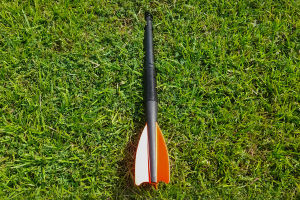Football, known as soccer in some parts of the world, is the most popular sport globally, celebrated for its excitement and skill.
This guide will help you understand the basics, improve your game, and navigate the world of football.
Understanding Football Basics
The Objective
The main aim in football is to achieve goals by successfully placing the ball into the opposing team's net. The team that accumulates the highest number of goals by the conclusion of the match is declared the winner.
The Pitch
A standard football pitch is rectangular, measuring about 100 to 110 meters in length and 64 to 75 meters in width. The pitch features a center circle, two penalty areas, and two goals.
The Players
A team is composed of eleven members, including one goalkeeper and ten outfield players, who are generally categorized into defenders, midfielders, and forwards. The formation and roles vary depending on the team’s strategy.
Key Football Skills
Dribbling
Dribbling refers to the skill of managing and guiding the ball while in motion. It’s essential for advancing play and beating defenders. Practice using both feet to dribble with control and precision.
Passing
Effective passing is essential for retaining possession and generating opportunities to score. Techniques include short passes, long passes, and through balls. Practice accuracy and timing with various types of passes.
Shooting
Shooting is how you score goals. Key techniques include the instep drive, volleys, and headers. Focus on accuracy and power, and practice shooting from different angles and distances.
Defending
Defending involves blocking or intercepting the opponent’s attacks. Techniques include tackling, marking, and positioning. Good defenders anticipate plays and work to disrupt the opponent’s rhythm.
Goalkeeping
Goalkeeping requires quick reflexes and strong hands. Goalkeepers must be adept at saving shots, positioning themselves well, and organizing the defense.
Football Tactics and Formations
Formations
Formations dictate how players are positioned on the pitch. Common formations include:
4-4-2: Four defenders, four midfielders, and two forwards.
4-3-3: Four defenders, three midfielders, and three forwards.
3-5-2: Three defenders, five midfielders, and two forwards.
Tactics
Tactics involve strategies to outplay the opponent. Key tactics include:
Pressing: Applying pressure high up the pitch to regain possession.
Counter-Attacking: Defending deep and attacking quickly when the ball is won.
Possession Play: Maintaining possession to control the game and create chances.
Football Equipment
Football
A standard football is size 5 and is used in all professional and most amateur matches. It should be properly inflated and meet regulations.
Footwear
Football boots vary based on the surface (firm ground, artificial turf, or soft ground). They provide grip and support for different playing conditions.
Shin Guards
Shin guards protect the lower legs from injury. They should be worn under the socks and fit comfortably.
Kit
Players typically wear a shirt, shorts, and socks, along with appropriate undergarments for comfort and protection.
Conclusion
Football is a game of skill, strategy, and teamwork. Whether you’re a beginner or an experienced player, understanding the basics, mastering key skills, and applying effective tactics will enhance your enjoyment and performance. So, Lykkers, dive into the game, practice regularly, and embrace the passion of football!
Beginner’s guide to football | Football for dummies
Video by Unisport


